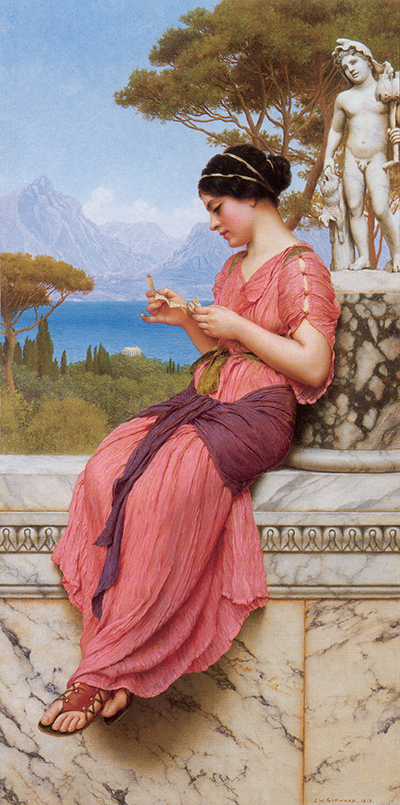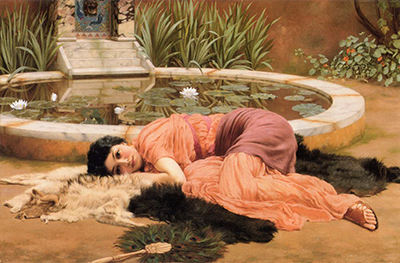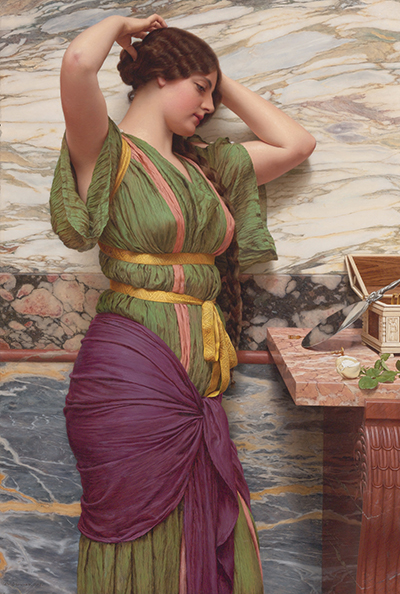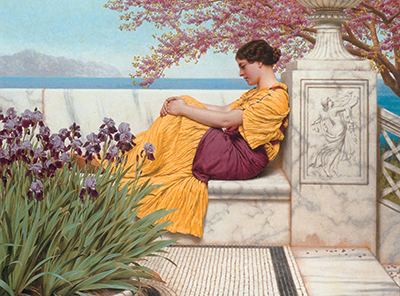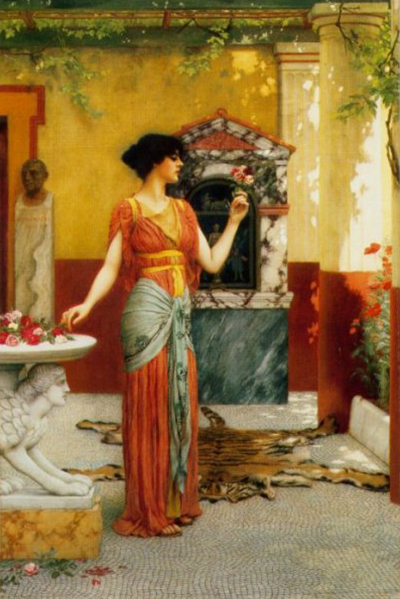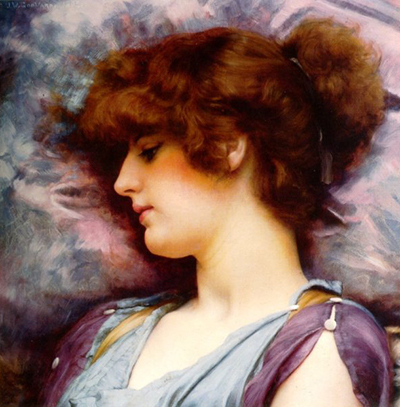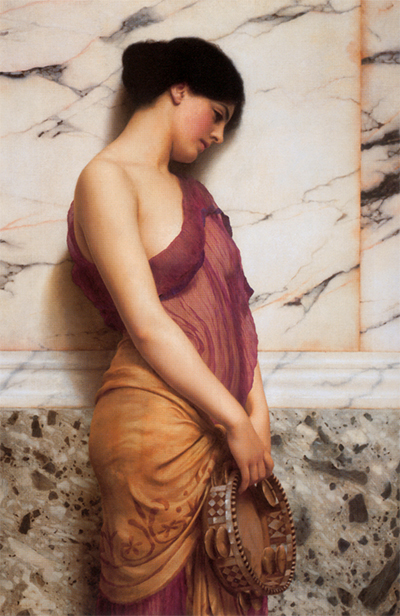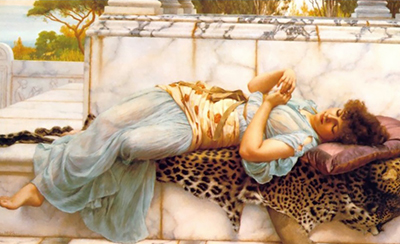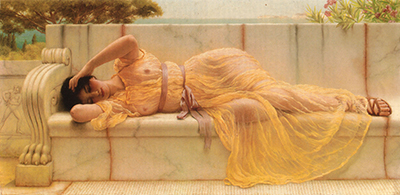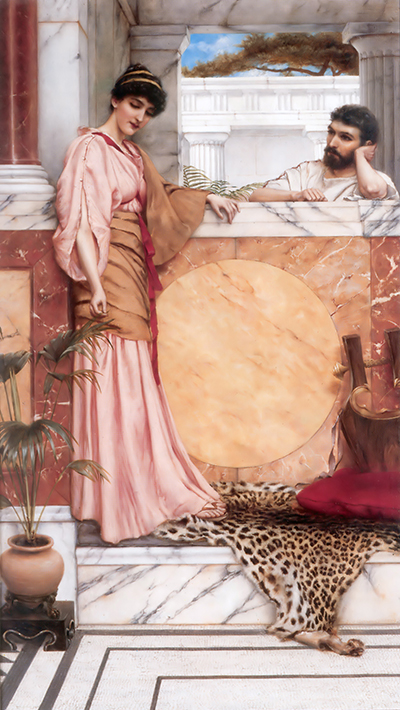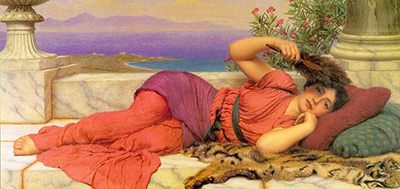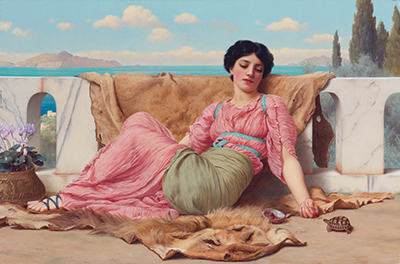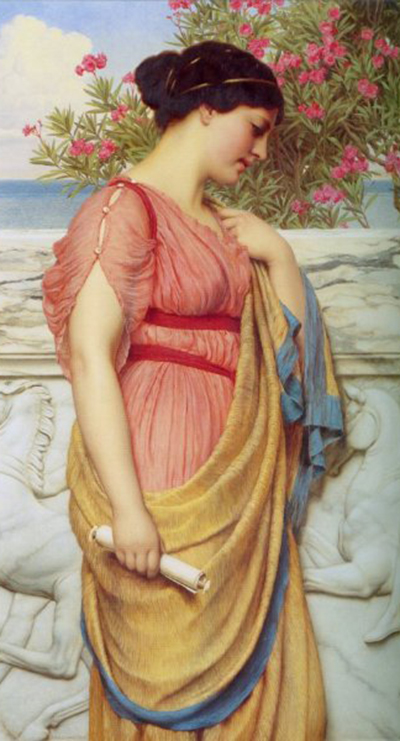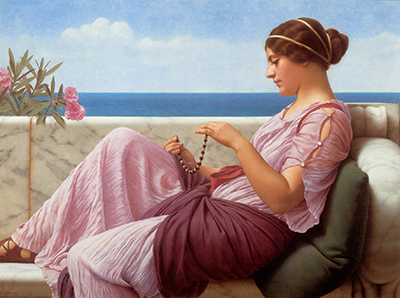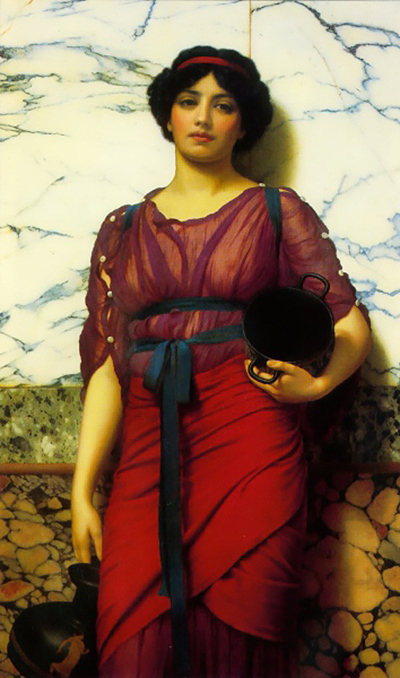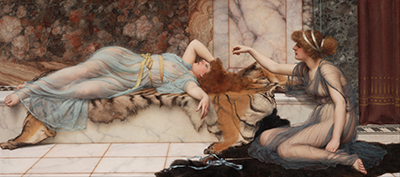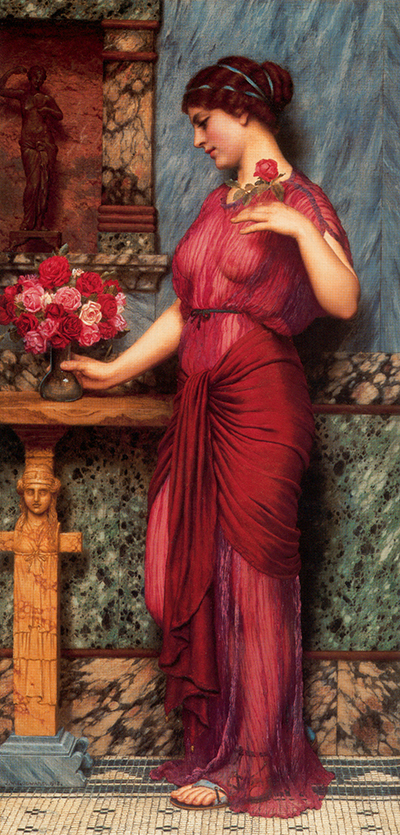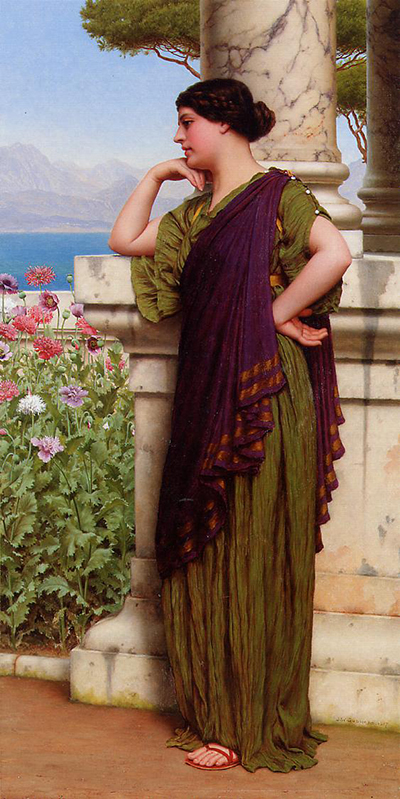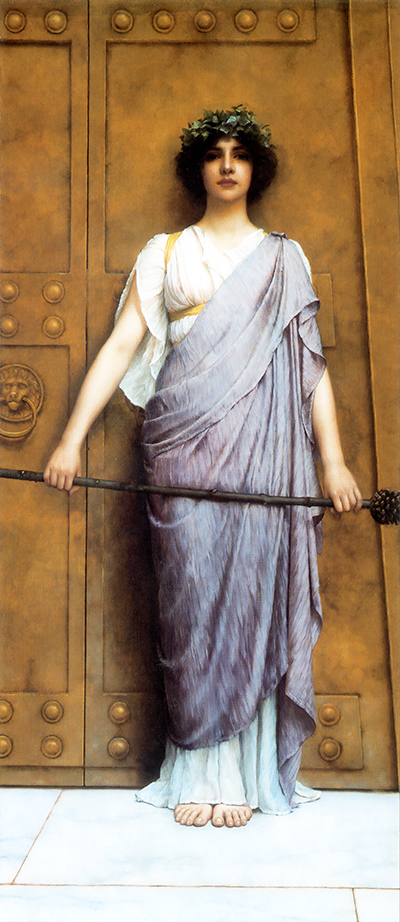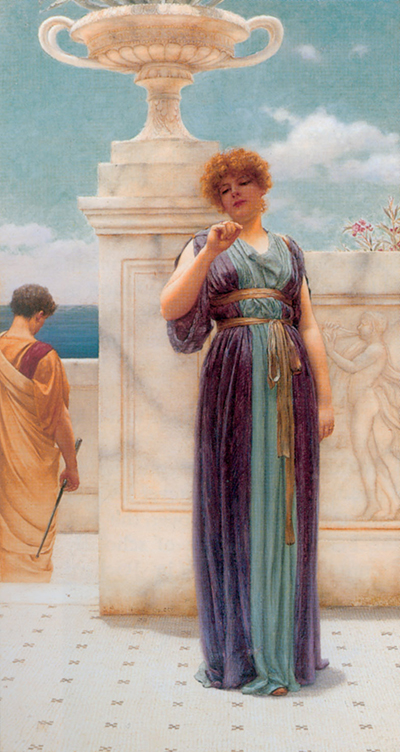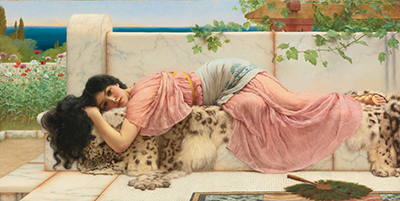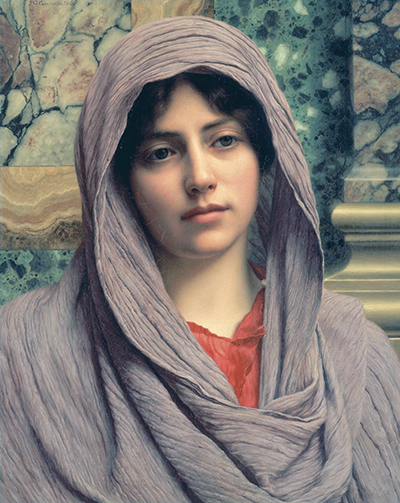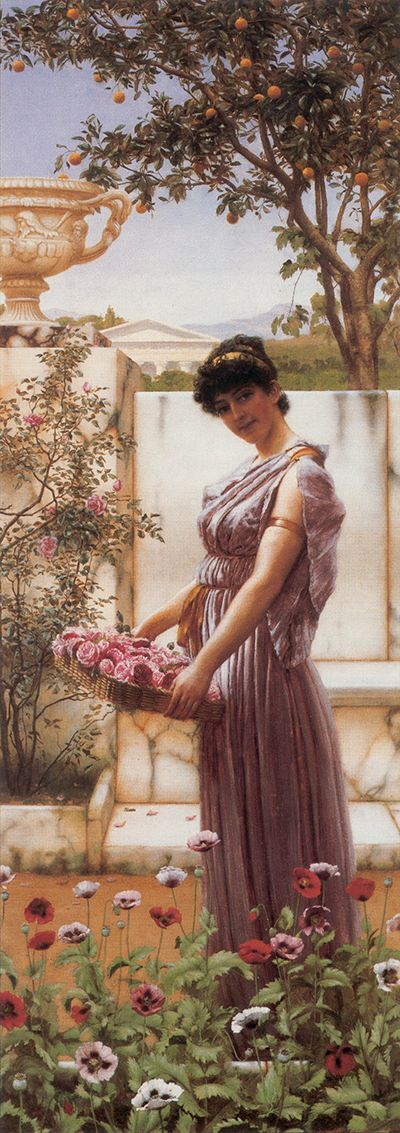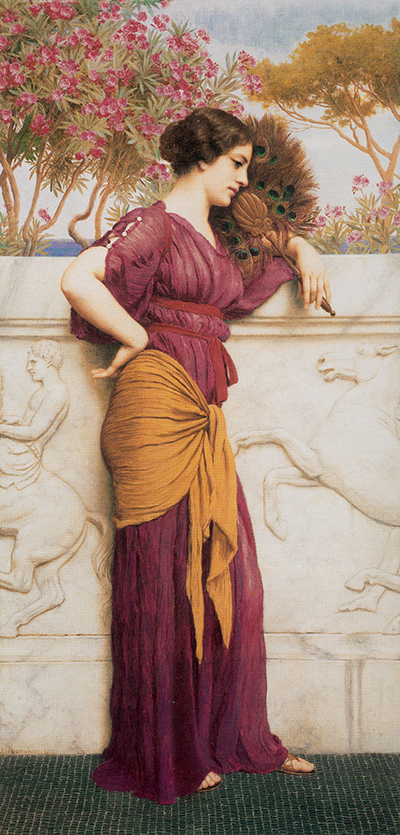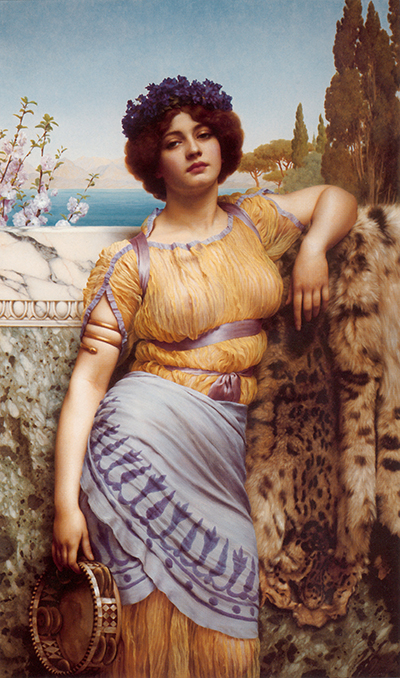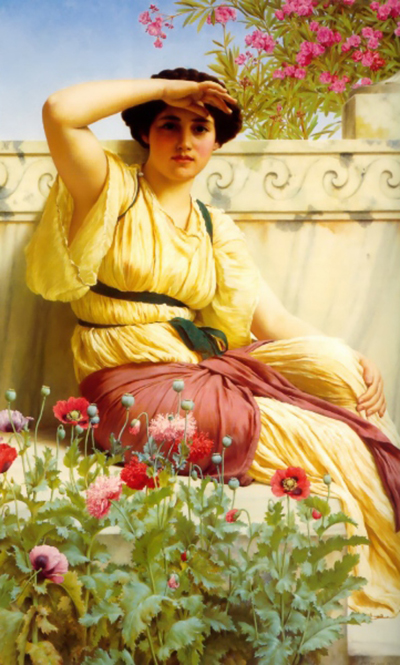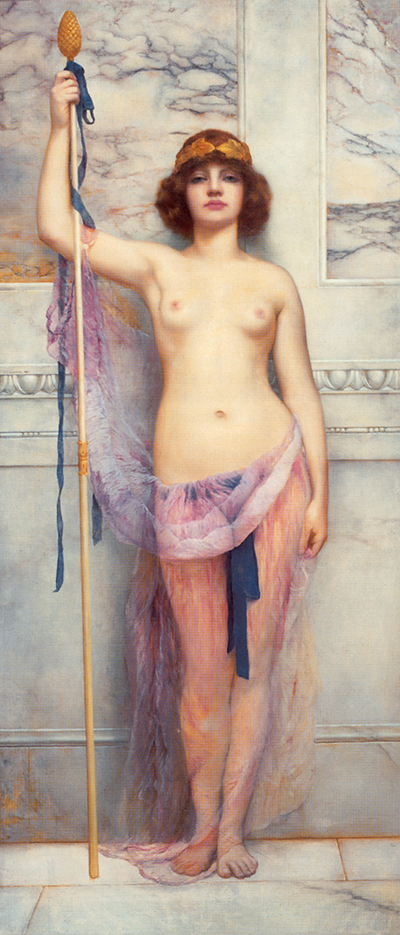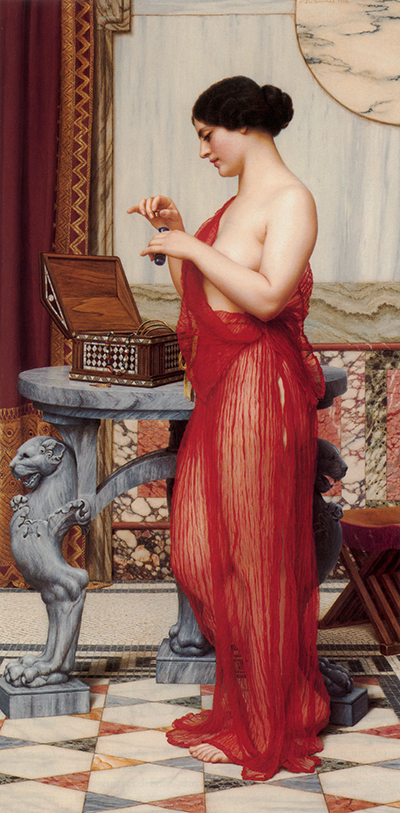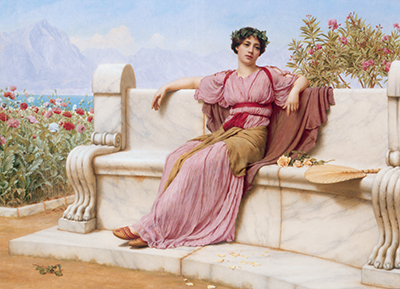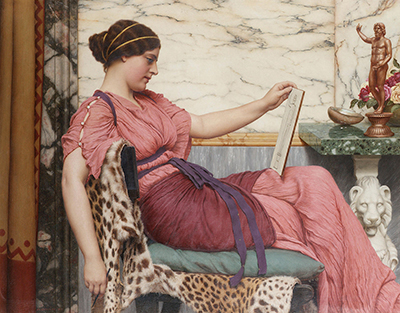John William Godward's paintings were one of the highlights of the late Graeco-Roman period just as Classicist art was reaching his peak and about to fall away in favour of more modern art movements.
Most of those aware of the work of this artist will understand the influence upon him from Sir Lawrence Alma-Tadema but, in truth, there were several other artists involved in helping to shape Godward's consistent style which persisted throughout his lifetime. You find the signature elements of his work even in the very earliest pieces that he delivered around 1886 - Flower Girl, for example, features the Roman-Greek inspired architecture along with simple but elegant fashion to match that period. His model was typically of slim build with a light complexion. There is even the inclusion of an animal skin on the floor which continued into many later paintings.
When comparing that artwork with the painting pictured on the left (The Love Letter), which occured much later, you will see how the artist slowly developed his figurative skills and sharpened up the facial detail of his models. The palettes would also start to become a little brighter, with sky scenes appearing in the far distance of many paintings.
It is likely that Godward's habit of painting an image of perfection and tranquility provided an escape from his own turbulent life. His own mother was known to be strict and highly religious, though he would never include religion within any of his own paintings. Nor would he include any of the negative emotions that he experienced through his relationships with family members in the atmosphere of his artwork. This tranquil world that he created helped to attract considerable support for his career at the point at which Neo-Classicism was at its peak.
Art historians have often made the mistake of summarising Godward's entire career as being that of a devoted follower of Alma-Tadema who was purely mimicing the master's style. The reality is that this is only true in the earliest parts of his development and that the mature years of his career were far more individualistic. Godward, for example, did not venture anywhere deeply into the depiction of architecture as Alma-Tadema had done. There are also many similarities between his work and that of Frederic Leighton, but, again, not an exact match by any means.
When considering the rigidity of the artist's oeuvre, it is easy to understand why many dismissed the artist as a clone of Alma-Tadema on first glance. In truth, there are many unique qualities to his work which are only starting to be appreciated today and it would be fairer to label him as a 'Little Master' - a term often used in Dutch art to signify an artist who specialises in a particular niche and dominates it over all others. Godward's niche would clearly be elegant women posing by marbled facades in classical backdrops and he produced nothing else but this right across his career.



